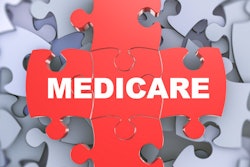
In response to concern expressed across the spectrum of physicians and their representative organizations, the omnibus spending bill titled the Consolidated Appropriations Act, 2023 (CAA23) passed by the U.S. Congress on December 23 rolled back a Medicare payment cut of 8.5%. As a result, we estimate that the conversion factor will still be cut 2.08% for 2023. However, as we reported previously, many practices will feel a larger reimbursement reduction due to the annual valuation adjustments within the fee schedule.
 Sandy Coffta.
Sandy Coffta.The scheduled 8.5% reduction came from a combination of two factors, the Medicare Physician Fee Schedule (MPFS) and a provision known as PAYGO. The MPFS was to be reduced by 4.5% in accordance with statutory formulas, which included a reversal of a 3% last-minute adjustment in December 2021 that was passed to avert a similar cut to the 2022 fee schedule. The Pay-As-You-Go Act of 2010 (PAYGO) was to have implemented a 4% sequester on Medicare payments. Since its enactment, PAYGO has been waived by Congress each time it might have been invoked.
The CAA23 again waives the PAYGO sequester of 4%, and it applies a 2.5% increase to the MPFS conversion factor for 2023, which we calculate will bring it to $33.8872 per RVU. This represents a 2.08% decrease from the 2022 rate of $34.6062. It does not go as far as the proposed H.R. 8800, which would have nearly eliminated the 4.5% MPFS reduction altogether for 2023. The bill also includes a preemptive adjustment of +1.25% to the 2024 conversion factor after it is calculated according to statute.
The result of the CAA23 adjustments is as follows:
| Effective 2022 | Scheduled 2023 | Final 2023 | Final 2023 vs. 2022 | |
| Conversion Factor | $34.6062 | $33.0607 | $33.8872* | -2.08%* |
| PAYGO Sequester | 0% | 4% | 0% | No change |
| Payment Sequester | ||||
| January - March | 0% | 2% | 2% | -2% |
| April - June | 1% | 2% | 2% | -1% |
| July - December | 2% | 2% | 2% | No change |
The price for the 2023 and 2024 reprieve will be a continuation of the current 2% Medicare payment sequester for two additional years through 2032. The sequester was suspended during the COVID Public Health Emergency (PHE) and it was reinstated in steps during 2022. For 2023, the 2% rate will be in full effect for the entire year, whereas for 2022 the net rate was 1.25% on an annualized basis.
The bonus of 5% awarded to physicians who participate in the Quality Improvement Program (QPP) through Alternative Payment Models (APM) was scheduled to be eliminated in 2023. A bill pending in the Senate would have restored the bonus in full, but the CAA23 extends it for 2023 at 3.5%.
States will be permitted to remove ineligible Medicaid enrollees out of the program starting on April 1, even if the PHE remains in place. According to this CBS News report, the passage of the CAA23 will permit Medicaid disenrollment to begin on April 1, but the action could be delayed for many states. The Kaiser Family Foundation estimates that 15-18 million individuals will lose coverage based upon this provision of the CARES Act that will be ending soon. Practices will have to be sure to verify coverage for their Medicaid patients.
Provisions implemented during the COVID Public Health Emergency (PHE) that allow telehealth services to be provided more readily will be extended through the end of 2024. Without the CAA23 changes, the telehealth flexibilities would have expired 151 days after the end of the PHE.
Unrelated to the CAA23, the U.S. Centers for Medicare and Medicaid Services (CMS) recently announced that it has extended the discretionary enforcement of certain provisions of the No Surprises Act related to Good Faith Estimates (GFE), according to an article posted by Health Leaders.
The actual impact of the MPFS to radiology will depend on the modality and procedure mix of the individual practice. Once the final fee schedule becomes available, we will analyze the act's impact on the MPFS and will report our results.
Sandy Coffta is the vice president of client services at Healthcare Administrative Partners.
The comments and observations expressed are those of the author and do not necessarily reflect the opinions of AuntMinnie.com.



















